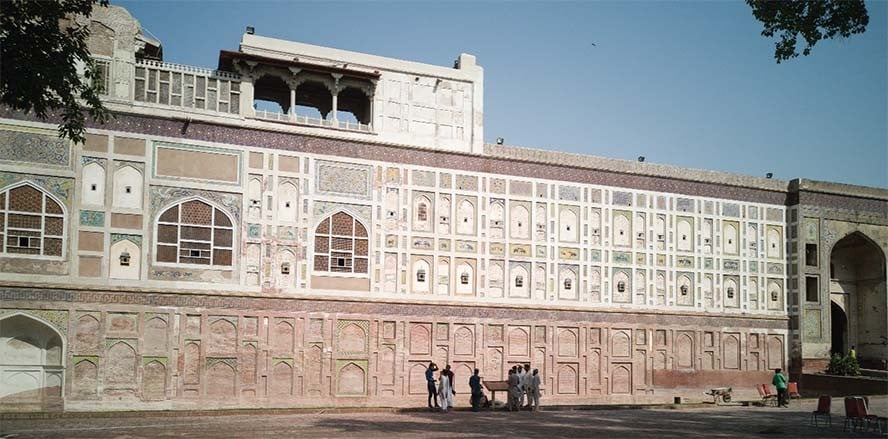
The restoration of the Picture Wall inside the Lahore Fort is a step in the right direction

The Lahore Fort is home to the world’s largest picture wall -- it’s 1,510 feet long and 50 ft high. It begins at the Haathi Gate and goes right up to the Mughal Emperor Jahangir’s Quadrangle.
It is hard to capture the magnificence of the picture wall in words. Indeed, the most immediately engaging aspect of it that the wall presents the history and activities of the Mughals; their festivities, their foods, livestock, and so on, through images of hunting, battle scenes, angels and demons, dragons, human figures, birds, as well as geometric and floral patterns.
For the uninitiated, the picture wall is composed of the world’s fresco tiles, mosaic paintings, and has the base of terracotta which would be rarely found elsewhere. Mughal Emperor Nuruddin Muhammad Salim, also known as Jahangir, ordered to commence work on this wall in 1624-25 AD. But it was completed only by his successor, Shahabuddin Muhammad Khurram (aka Shah Jahan), in 1631-32 AD.
Most of the embellished buildings inside the Lahore City in general and Lahore Fort in particular belong to the period of Shah Jahan, who was said to have a great aesthetic sense.
Art critic and academic Quddus Mirza believes that the subjects of the picture wall are closely connected with the miniature paintings of the Mughal period that revolved around the life and activities of the rulers.
"Although the works were created centuries ago, and in the medium of mosaic tiles that is static in nature, yet the human figures and animals as well as imaginary characters seem set in motion," he says. "Our eyes move from one fragment to the other guided by the pictorial order, its composition, and colour scheme."
The wall has been restored by the Walled City of Lahore Authority (WCLA) and Aga Khan Culture Service Pakistan. The western side of the wall, which is 240 feet long, is the part that has been conserved. It consists of 635 decorated, recessed panels composed at three levels. The process included the stabilisation and consolidation of the structure of the picture wall, as well as its decorative elements. It warranted the expertise of both heritage craftsmen as well as conservators. It also involved archeological excavation in order to expose the original Mughal-era floor level (which was seven feet below the present ground level).
The rest of the wall extends on the northern side and its conservation work has started.
"In Lahore, I can say without fear that the impetus for conservation of monuments started with the Shahi Hammam which was fully funded by the Royal Norwegian Embassy," Mirza adds. "While the Embassy has supported work on Wazir Khan Mosque as well, their contribution has by far been the most generous for the conservation of the Picture Wall."